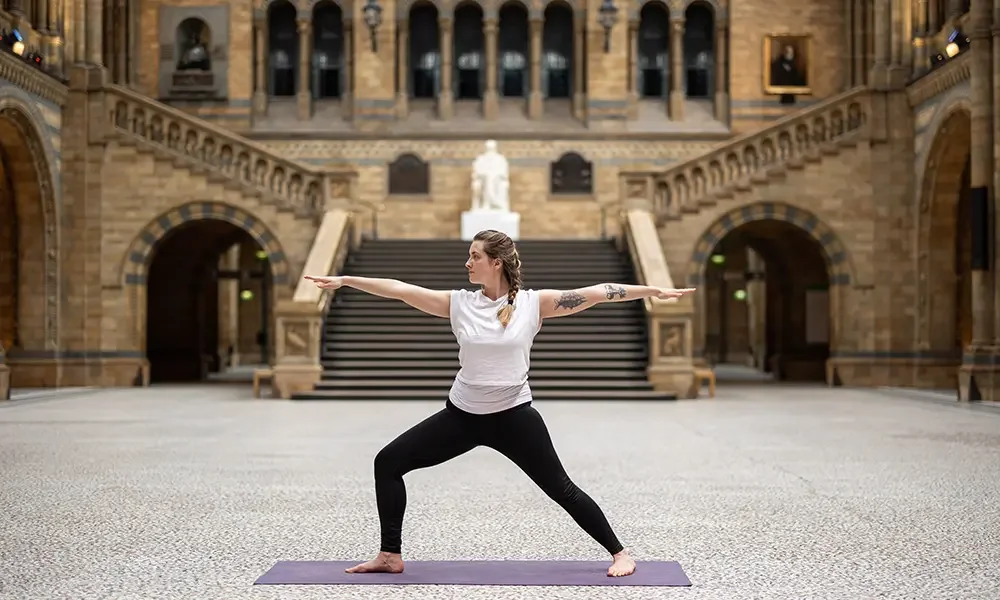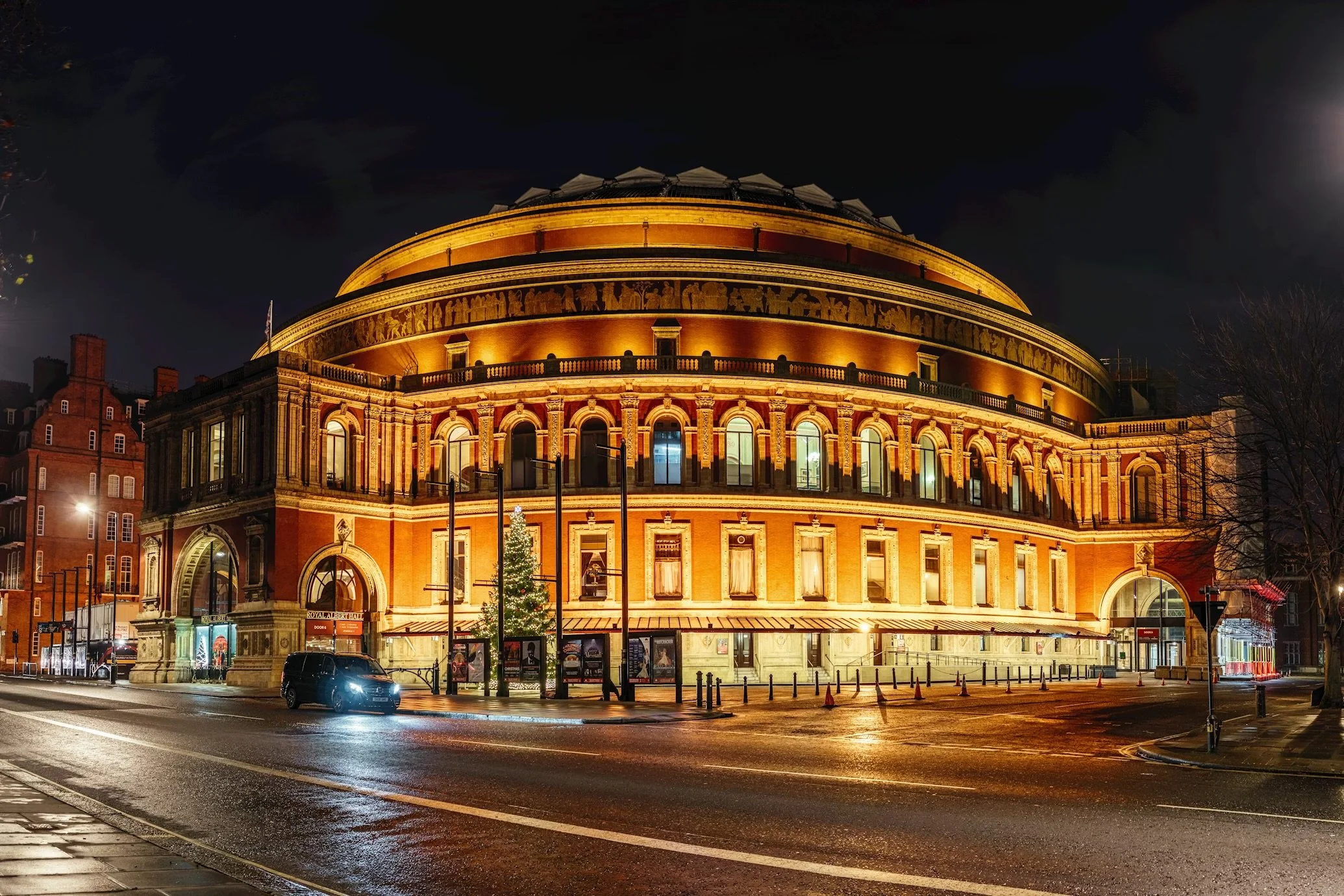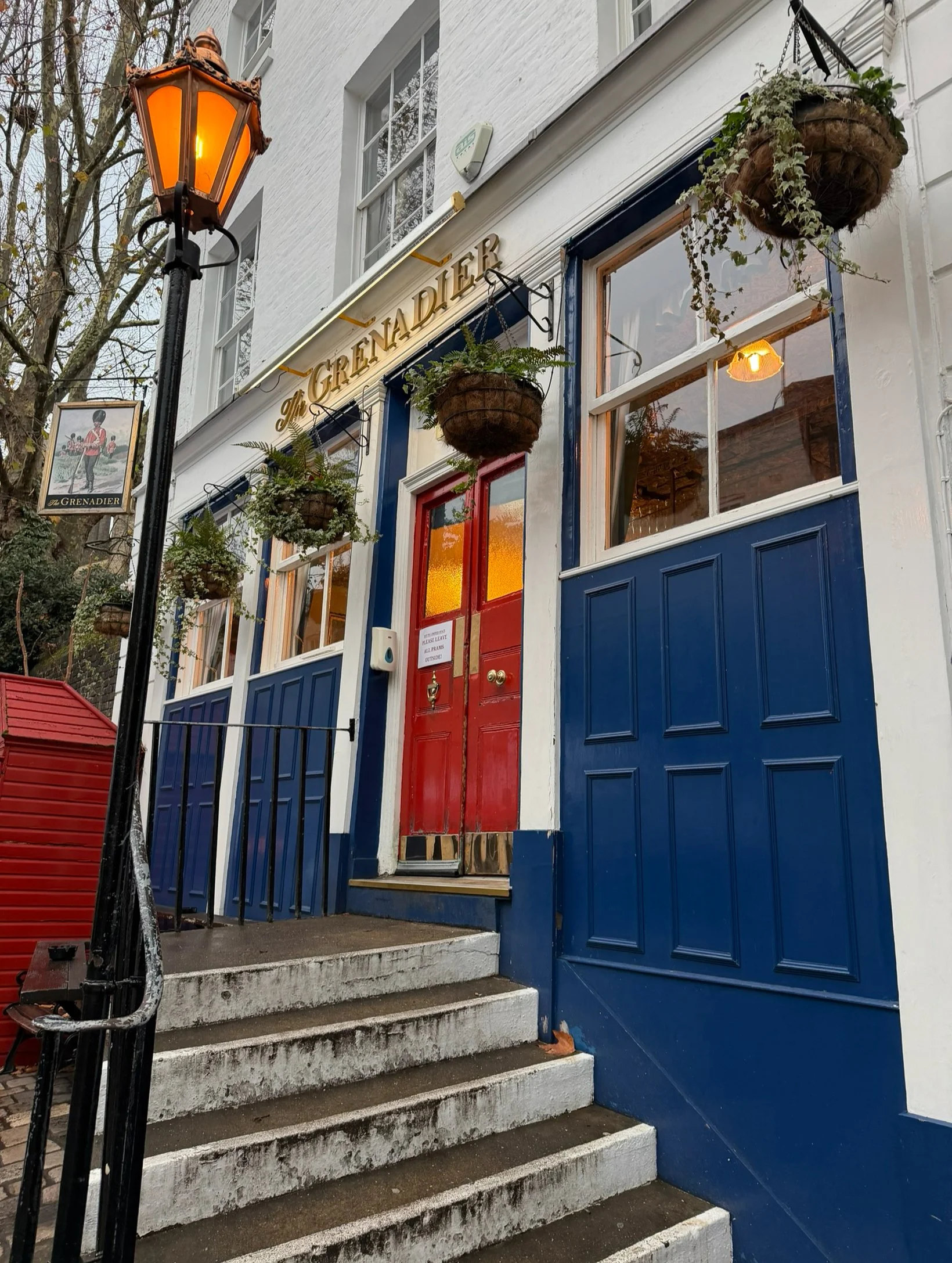In conversation with Leah Gordon
“My desire to look and satisfaction from looking started quite early in life. I wanted a lens before I even knew their real power.”
- Leah Gordon
Image: Leah Gordon, the artist
Leah Gordon is a photographer, artist, curator, writer and filmmaker. Gordon was born in Ellesmere Port, equidistant between Liverpool, a city built upon the slave trade, and Manchester, built upon the industrial revolution, themes that are recurrent in her work.
How did you begin your journey into photography and film?
My experience of growing up in Ellesmere port had many conflicting aspects. When I was a child there was probably 100% employment at Shell Stanlow, Vauxhalls, Carbon Black and Bowaters. this was a utopian era for the British Working class. But since Thatcherism it has declined and lacking the infrastructure for touristic gentrification has been allowed to sink into a low employment rate stupor.
I lived on a low-rise council estate, but life was great and family and community coherence was very strong. My desire to look and satisfaction from looking started quite early in life. I wanted a lens before I even knew their real power.
My first real experience of the lens…or of looking…was owning, at five years old, a little plastic pretend camera which when pointed at light and by clicking the mechanism circulated small transparencies of beautiful views. After that at ten years old my father won a Kodak Instamatic in a competition and let me use it. Also ten years old I declared I wanted to direct films, which was, as a young girl growing up in Ellesmere Port, considered quite unrealistic. I remember enjoying The Prisoner and The Avengers on TV and most influentially The Ruling Class with Peter O’Toole and If with Malcolm McDowell as films.
As an only child I read voraciously and had an early interest in magic, witches, reading Alan Garner, Susan Cooper and John Gordon…all British folk/magic stories. Coincidently, considering my future interest in Haiti, at the age of eight I started a ‘Voodoo’ club at school, very quickly shut down, but bizarrely precedent.
After school in 1977 I moved to Exeter and worked in a bookshop but set up a small darkroom in the basement of a house where I rented a room. After some research I found out about a quite radical degree in Film and Photography at the Polytechnic of Central London and joined the degree course in 1980.
After graduating I started a feminist folk-punk band which gave me, as a lyricist, a chance to reimagine the female voice of the British Peasantry and Fisherfolk. We wanted, in some small way, to reconfigure the traditional folk gender narrative.
How would someone recognise your photography? Would you say there is some sort of recognisable characteristic?
My most aesthetically recognisable work is the black and white analogue photography taken on a medium format Roleiicord film camera. I have used this camera to record all the KANAVAL images and the UK traditions before that. More recently I have been working with artist, Marg Duston, who hand-tints my black and white prints to create an aspect of the uncanny as a visual effect. Using this process, my practice oscillates between more traditional documentary portraiture and constructed portraits which are often influenced by 17th century illustrators, including William Blake, and Renaissance portraits as with the Caste Portraits and the Kingdom of this World.
But I have embraced digital technology for my work too…photographing air traffic control towers and airport prayer spaces. This was primarily due to overcoming draconian photography restrictions in airports but I also began to enjoy the latitude in re-presentation that was on offer with digital too.
It is very important for me to highlight a few technical details as an extra explanation of how the form, technique and aesthetic of the work relates to the KANAVAL project of history and narrative. Using a 60-year old Roleiicord medium format twin lens reflex camera with a separate Lunasix light meter I shoot onto black and white negative film. The camera and the light meter are totally mechanical and once the film, of only 12 exposures per roll, is loaded the shutter must be cocked before you can actually take a picture. All exposure changes are manual and winding onto the next frame is quite laborious too.
I wander the streets searching for characters that will agree to be photographed. It is important that I can speak Kreyòl (Creole) which makes people feel more engaged in the process as they better understand what I am doing. I always ask beforehand and pay people for the chance to photograph them. If they agree, and many do not, they always seem to be very patient with the long process. As I need to take a light reading, change the speed and aperture and focus, there is always stasis in my images as the process takes a bit of time. But with the slow process a dynamic space between myself and the sitter is created, which seems to leave the street and enter the territory of the old-fashioned portrait studio. The sitters strike poses reflecting their masked characters. One of the essayists in my book referred to this as 'performed ethnography'. The time and space created seems to allow for a little of the historical narrative to seep through in a way that rapid fast cameras needing no interaction between photographer and sitter cannot. Also, as I look down into the viewfinder rather than hold the camera up you my face I feel this reduces the distance and alienation created by modern digital SLR cameras.
What was the inspiration behind your film Kanaval: A People’s History of Haiti in Six Chapters?
I published a book with Here Press in 2021 of my long-term almost three-decade project, documenting a carnival in Jacmel, Haiti with photography and oral histories.
When I had the chance of publishing a book of these images, I was very particular to work with a publisher that respected the importance of the oral histories and contextual essays. When I had the chance to make the film I formalised the relationship between a majority class telling of their often marginalised and silenced histories from below and to present it in chronological order…to tell a history of Haiti from the bottom up. All the voices that speak in the film (as with all the oral histories in the book) are from majority class (by that I mean lower class) carnival participants, artists, and religious practitioners.
The chance of making a film inspired by this book allowed me to experiment with re-presenting the colour and kinesis of carnival formerly edited out of my images. Also, the film gave the team the chance to bring the important history of Haiti to a wider audience.
How did your current exhibition Kanaval come together?
This exhibition was a marvellous chance to reassess all the images created in this 28-year period and to create the first commercial show of the work. It was a long process for me to rescan many unnoticed shots and bring them to the light of the gallery walls. Also it was a great privilege to have the esteemed Guadeloupean writer and curator, Claire Tancons, write an essay especially for this exhibition.
What messages and themes do you try to communicate in your work? How has this evolved over the years?
I am a former revolutionary socialist and now an anarcho primitivist, and explore the turbulences of the epochal capitalist accumulations of the 18th and 19th centuries to help me gather an internationalist understanding of where we find ourselves in the 21st century. I feel we suspected the Modern as a slick mediator of capitalist expansion far too late. Modernism's relation to architecture; the intervolved histories of the slave trade, the enclosures, and the industrial revolution; grassroots religious, class and folk histories; and the proliferation of informal economies are sources of research. I scour back through time to unearth quasi-utopic pasts and depend on proxy histories from pre-grain societies, esoteric rituals, alchemical processes, collective bargaining and revolutionary narratives to garner scraps of salvation. I make work to reveal overlooked radical histories, unorthodox and esoteric knowledge systems.
To me it seems as if the Haitian Slaves’ Revolt was a stone piercing the surface of colonialism and capitalism and the ripples are continued by activists, radical politics, artists and poets. Also, I feel it is important for the world to know that the revolutionary struggle didn’t end with the overthrow of slavery in Haiti, as the new independent nation gave sanctuary to political dissidents, fugitive slaves and revolutionary republicans such as Simon Bolivar.
Whilst the Slaves’ Revolt was erased from the history books in the West an uncountable number of Black and socialist scholars, poets, playwriters have used it as a source of inspiration from CLR James, author of the Black Jacobeans; Michel-Rolph Trouillot author of State Against Nation and Silencing the Past. The Common Wind by Julius S. Scott explores the profound effect of the Slaves’ Revolt on the creation of intercontinental networks of radical struggle; Arthur Jafa has stated that the Haitian Revolution is a huge inspiration to his work; the play The Tragedy of King Christophe was written by by Aimé Césaire; and Alejo Carpentier’s masterpiece novel Kingdom of This World explores the revolution and the aftermath. It is this revolutionary impulse and imperative that propels me to return and return to explore multiple ways of re-telling Haitian history.
I am also intrigued by the relationship between the modern and magic...at first seemingly antithetical but, often, the first is either propped up by the second or the modern creates and depends upon its own forms of magic to survive. My work Reciprocity Failure explores this by surveying bells, fire station drill towers, air traffic control towers and airport prayer spaces.
My Caste Portraits investigate the practice of the grading from black to white of skin colour, which marked the extent of racial mixing in 18th century colonial Haiti. Moreau de St Mery, a French colonialist living in Haiti, created a surreal taxonomy of race which classified skin colour from black to white using names borrowed from mythology, natural history, and bestial miscegenation.
Each name corresponds with a percentage of the fusion of black and white blood. As Colin Dayan, a Haitian historian, comments, ‘Stranger than any supernatural fiction, the radical irrationality of Moreau St Mery’s methods demonstrates to what lengths the imagination can go if driven by racial prejudice.’
I made the Caste Portraits depicting the nine skin varieties, with myself at one end of the scale as ‘Blanche’, and my partner, Andre Eugene, a Haitian sculptor, at the other end of the racial spectrum as ‘Noir’. I was simultaneously questioning my own relationship and culpability with Haiti’s history by placing myself in the series.
Image: Nèg Maron (Run-away Slave), 2001, Leah Gordon
Do any past or current artists inspire you?
My attraction to Haiti is also a part of a trajectory. A culmination of my love of folk traditions and people’s histories. From the feminist folk punk band I sang and wrote the lyrics for in the mid-eighties, to my enduring love of British folk traditions from the Burry Man to the Hooden Horses of Kent, and from my photographs of fairground ghost trains and street hawking children with Guy Fawkes. The photographic project of August Sander and the texts of political oral historian, Studs Terkel are important inspirations. My work is also deeply indebted to the illustrations of William Blake and John Thomas Smith; portraits of the Renaissance painters, the work of the French Symbolists such as Lucien Levy-Dhurmer; the paintings of De Chirico; the writings of historians from below such as Marcus Rediker, A.L. Morton, E.P. Thompson and Peter Linebaugh; and the philosophies of Silvia Federici and the poetic novels of Mary Webb.
Which current trends in the art world are you following?
I follow themes rather than trends…anarcho-geography, the rural idyll, Afro-gothic and folk horror, magic, rituals…majority class Haitian art, class…Ruth Ewan and Jeremy Deller.
What is the best advice you have ever received?
To forget all this art nonsense and study Chemistry to work in the petrochemical industry at Shell Stanlow in Ellesmere Port.
What advice would you give to any upcoming photographers and filmmakers with regards to their future career?
As above!
Only joking…you need passion for your subject matter and profound belief in what you are creating…do what you love and not what you think the audience want.
Can you tell us about any upcoming projects?
My current work, Monument to the Vanquished, on the Enclosure Acts highlights the legal process through which common rights over land were terminated and the common land converted to the exclusive property and use of a landowner. This project starts from a belief that a deeper understanding of the enclosure acts, along with the industrial revolution and the American and Caribbean plantation system, is vital to having a critical understanding of the systems and politics that will inhabit now.
I made contact with people that still had common rights over land and discover how they exercise these rights. I photographed commoners in the common lands where they held rights and interviewed them to hear more about their personal stories, commoners’ status and to discover any historic stories they knew about the land. The stories behind the remaining commons and commoners that held the varied rights presented as an excellent mechanism for understanding the historic legacy of the Enclosure Acts.
The photographs were taken on an analogue medium format camera with black and white film and the subsequent prints are hand-tinted using traditional photographic dyes. I used this process to enliven the landscapes, through colour, with a form of magical realism and invoke both the uncanny nature of the land. This serves to highlight a lost deeper, more spiritual, and mystical, often matriarchal and less mercantile connection to the land. It is the breaking of this relationship which Italian feminist historian, Silvia Federici, argues was central to the capitalist expansion of which the Enclosure Act was a dominant apparatus.
I am now moving into the second part of this episodic project depicting Rural Rebellions using photo montage and the third part, Urban Vagabonds, by creating constructed portraits with the support of Meadow Arts.
Kanaval by Leah Gordon is on display at Ed Cross Gallery until 18 February 2023.
Website: leahgordon.co.uk
Instagram: @leah_gordon_1804

















